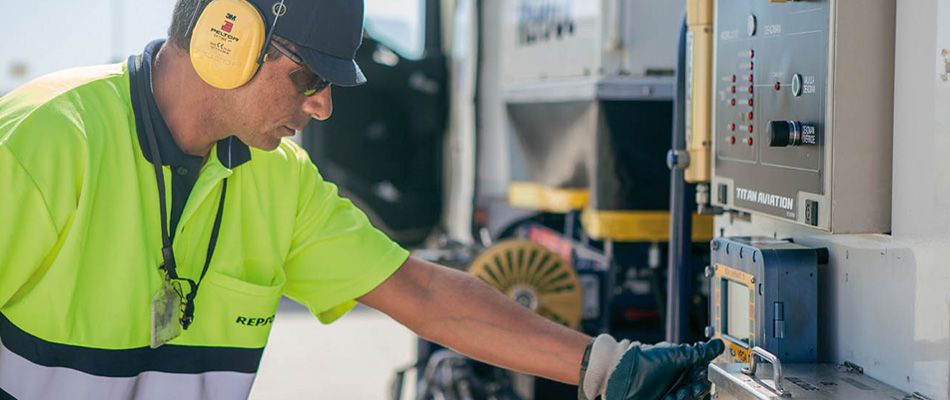Into-plane service in airports
Throughout the AENA airport network, this service is allocated by public tender and is provided by administrative grants over a pre-determined period of years. The into-plane companies that operate in Spain are governed by the JIG (Joint Inspection Group) Guidelines, which is a set of internationally accepted best practices for the management of airport facilities for aircraft fuels and supply to aircraft.
Terminales Canarios also operates the fuel storage facilities in the ports of Las Palmas and Tenerife, through which we receive aviation kerosene for these islands on tanker vessels.
On the other hand, we carry out out refueling operations directly in the five main airports of Portugal: Lisbon, Porto, Faro, Funchal (Madeira), and Santa Maria (Azores). Additionally, we are the operator of fuel storage facilities at Funchal (Madeira) and Faro airports.

How is the into-plane service carried out?
We offer into-plane services in different ways, depending on the type of aircraft and the vehicle used to supply it:
Refueling unit: is a vehicle which comprises a tractor unit, supply equipment and a tank for fuel storage.
We can supply fuel in two ways, depending on the aircraft to be supplied:
- Overwing or pressureless refueling: this type of refueling is generally done on the wing of small aircraft through the aperture of the fuel tank, which is in contact with the atmosphere. Fuel is supplied through the pipe of the delivery nozzle.
- Underwing or pressure refueling: this type of refueling is done through a specific valve which connects to the aircraft's fuel tank. It is carried out using a specific technique which controls flow speed and pressure.
Dispenser: a vehicle which has dispensing equipment and a connection valve to the hydrant pit.
The dispenser consists of a tractor unit and supply equipment. Fuel is supplied by connecting the dispenser to the airplane’s fuel tank and to the airport’s hydrant pit.
The fuel, in this case, is contained on the interior of the airport’s hydrant pit tubes, which are located under the aircraft parking apron.A series of pumps keeps the hydrant pressurized in order to propel fuel towards the airplane's fuel tank when the dispenser connects to a hydrant pit valve. In this case, refueling will always be done underwing (pressure fueling).

